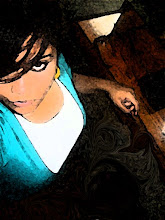Training –
All patrollers need to know how to recognize suspicious activity and sounds, the techniques of obtaining an accurate description of a suspect and/or a vehicle and how to give an accurate description of the location. Further, they should be trained and instructed on how to request assistance from police if anyone is threatened or in danger. The volunteers must proceed with caution. Don’t confront a suspect or drug dealer alone. Neighborhood watch volunteers should not take any risks to prevent a crime or to facilitate an arrest. Confrontations can occur and escalate quickly.
It is important to note that patrol groups can and should work together. Organizations patrolling their own neighborhoods can share the same radio frequency and sometimes, can go on joint patrols or when necessary supplement each other’s patrols in adjacent communities. In such a collaborative relationship,watch groups or patrols help each other expand their capacities to fulfill their missions.
Crime Mapping.-
As a result of advancements in computer technology, crime mapping is becoming increasingly sophisticated, integrated and available. Nearly every police department is using some form of computer software to collect data about crime incidents and display that information on maps for analysis. This technology is being employed by law enforcement in an attempt to identify emerging criminal activity and trends with a focus toward crime prevention. Usually these maps depict neighborhood streets and use geometric shapes to indicate the location of recent criminal activity. One of the most comprehensive efforts in Internet crime mapping is underway in San Antonio, Texas, where the police department provides district maps that link to tables of crime data. The Ft. Wayne, Indiana Police Department does not provide maps on the Internet, but posts daily activity reports. Some police departments routinely supply less sensitive crime mapping data to neighborhood watch groups and to the public via the WEB. Reluctance to make the data widely available is related to several factors including the fear of misuse and misinterpretation of the information and the need for confidentiality for some crimes, such as rape and juvenile offenses.
Neighborhood watch groups and patrols can benefit by gaining access to this data. Knowledge is
empowering and knowledge about crime patterns can be used to prevent victimization. The neighborhood watch group should do the following:
Find out about the information technology application at your local police department.
Inquire as to what type of information is available to watch groups.
If the crime data/mapping is available, ask whether the watch group can download the information.
Neighborhood watch groups should try to develop a relationship with the technology managers at the local police department so that the group can have input in the way in which the technologies are developed and implemented. However, proceed with caution. The watch group should be an advocate for the responsible dissemination of information. Confidentiality of a victim's identity and whereabouts should be assured.
Window Watcher Project.-
A Window Watcher project is yet another way to increase community surveillance. Utilize the time and energy of seniors and ask them to keep a watch from their windows at various times. Ask them to report any suspicious activity or
noise to the home base and the police. Seniors and the homebound are vital resources to be tapped not only for maintaining vigilance but also to help with mailings and other organizational tasks.
http://http//www.jpna-milw.org/blockwatchideas.htmI really love to see and learn about how organized there block watch is . My neighboorhood had one I dont know what happended. I think that Johnsons Park is a model for any neighborhood trying to establish a block watch .




